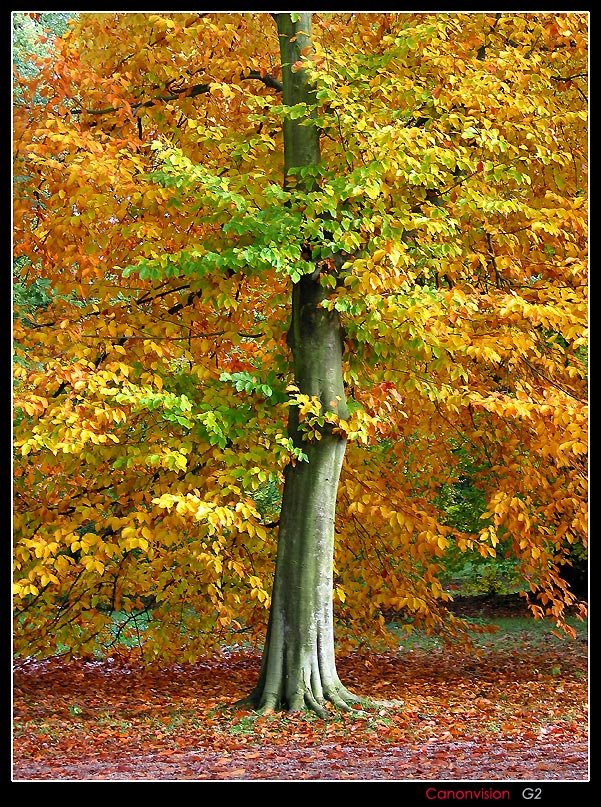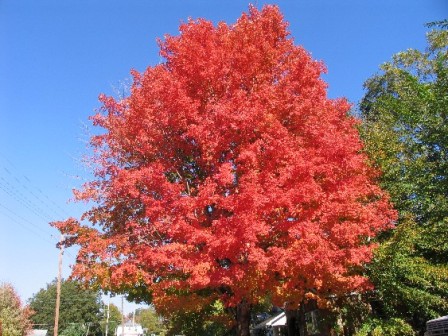Maple Tree Biography
Most maples are trees growing to 10 – 45 meters (30 – 145 ft) in height. Others are shrubs less than 10 metres tall with a number of small trunks originating at ground level. Most species are deciduous, but a few in southern Asia and the Mediterranean region are evergreen. Most are shade-tolerant when young and are often late-successional in ecology; many of the root systems are typically dense and fibrous. A few species, notably Acer cappadocicum, frequently produce root sprouts, which can develop into clonal colonies.[3]Maples are distinguished by opposite leaf arrangement. The leaves in most species are palmate veined and lobed, with 3 to 9 (rarely to 13) veins each leading to a lobe, one of which is central or apical. A small number of species differ in having palmate compound, pinnate compound, pinnate veined or unlobed leaves. Several species, including Acer griseum (Paperbark maple); Acer mandshuricum (Manchurian maple); Acer maximowiczianum (Nikko maple); and Acer triflorum (Three-flowered maple), have trifoliate leaves. One species, Acer negundo (Box-elder), has pinnately compound leaves that may be simply trifoliate or may have five, seven, or rarely nine leaflets. A few, such as Acer laevigatum (Nepal maple) and Acer carpinifolium (Hornbeam maple), have pinnately veined simple leaves.
The flowers are regular, pentamerous, and borne in racemes, corymbs, or umbels. They have four or five sepals, four or five petals about 1 – 6 mm long (absent in some species), four to ten stamens about 6 – 10 mm long, and two pistils or a pistil with two styles. The ovary is superior and has two carpels, whose wings elongate the flowers, making it easy to tell which flowers are female. Maples flower in late winter or early spring, in most species with or just after the appearance of the leaves, but in some before the trees leaf out.[6]
Maple flowers are green, yellow, orange or red. Though individually small, the effect of an entire tree in flower can be striking in several species. Some maples are an early spring source of pollen and nectar for bees.
The distinctive fruit are called samaras or "maple keys". These seeds, or 'whirlybirds,' occur in distinctive pairs each containing one seed enclosed in a "nutlet" attached to a flattened wing of fibrous, papery tissue. They are shaped to spin as they fall and to carry the seeds a considerable distance on the wind. Children often call them "helicopters" due to the way that they spin as they fall. Seed maturation is usually in a few weeks to six months after flowering, with seed dispersal shortly after maturity. However, one tree can release hundreds of thousands of seeds at a time. Depending on the species, the seeds can be small and green to orange and big with thicker seed pods. The green seeds are released in pairs, sometimes with the stems still connected. The yellow seeds are released individually and almost always without the stems. Most species require stratification in order to germinate, and some seeds can remain dormant in the soil for several years before germinating.[3]
The genus is subdivided by its morphology into a multitude of sections and subsections.[7]
Most maples are trees growing to 10 – 45 meters (30 – 145 ft) in height. Others are shrubs less than 10 metres tall with a number of small trunks originating at ground level. Most species are deciduous, but a few in southern Asia and the Mediterranean region are evergreen. Most are shade-tolerant when young and are often late-successional in ecology; many of the root systems are typically dense and fibrous. A few species, notably Acer cappadocicum, frequently produce root sprouts, which can develop into clonal colonies.[3]Maples are distinguished by opposite leaf arrangement. The leaves in most species are palmate veined and lobed, with 3 to 9 (rarely to 13) veins each leading to a lobe, one of which is central or apical. A small number of species differ in having palmate compound, pinnate compound, pinnate veined or unlobed leaves. Several species, including Acer griseum (Paperbark maple); Acer mandshuricum (Manchurian maple); Acer maximowiczianum (Nikko maple); and Acer triflorum (Three-flowered maple), have trifoliate leaves. One species, Acer negundo (Box-elder), has pinnately compound leaves that may be simply trifoliate or may have five, seven, or rarely nine leaflets. A few, such as Acer laevigatum (Nepal maple) and Acer carpinifolium (Hornbeam maple), have pinnately veined simple leaves.
The flowers are regular, pentamerous, and borne in racemes, corymbs, or umbels. They have four or five sepals, four or five petals about 1 – 6 mm long (absent in some species), four to ten stamens about 6 – 10 mm long, and two pistils or a pistil with two styles. The ovary is superior and has two carpels, whose wings elongate the flowers, making it easy to tell which flowers are female. Maples flower in late winter or early spring, in most species with or just after the appearance of the leaves, but in some before the trees leaf out.[6]
Maple flowers are green, yellow, orange or red. Though individually small, the effect of an entire tree in flower can be striking in several species. Some maples are an early spring source of pollen and nectar for bees.
The distinctive fruit are called samaras or "maple keys". These seeds, or 'whirlybirds,' occur in distinctive pairs each containing one seed enclosed in a "nutlet" attached to a flattened wing of fibrous, papery tissue. They are shaped to spin as they fall and to carry the seeds a considerable distance on the wind. Children often call them "helicopters" due to the way that they spin as they fall. Seed maturation is usually in a few weeks to six months after flowering, with seed dispersal shortly after maturity. However, one tree can release hundreds of thousands of seeds at a time. Depending on the species, the seeds can be small and green to orange and big with thicker seed pods. The green seeds are released in pairs, sometimes with the stems still connected. The yellow seeds are released individually and almost always without the stems. Most species require stratification in order to germinate, and some seeds can remain dormant in the soil for several years before germinating.[3]
The genus is subdivided by its morphology into a multitude of sections and subsections.[7]
Maple Tree
Maple Tree
Maple Tree
Maple Tree
Maple Tree
Maple Tree
Maple Tree
Maple Tree
How To Identify A Maple Tree
Maple Tree Tapping








No comments:
Post a Comment